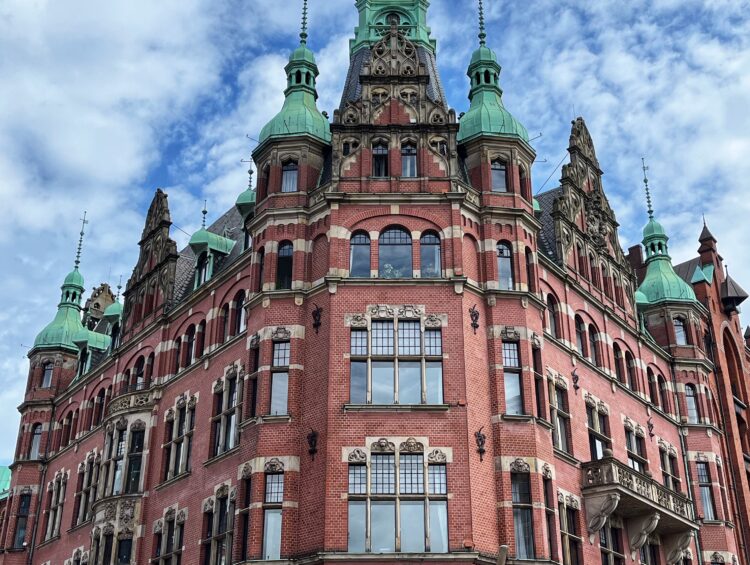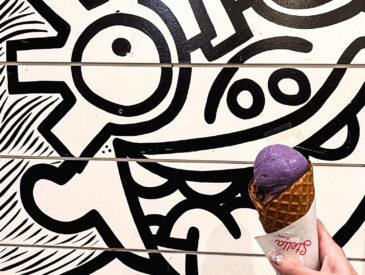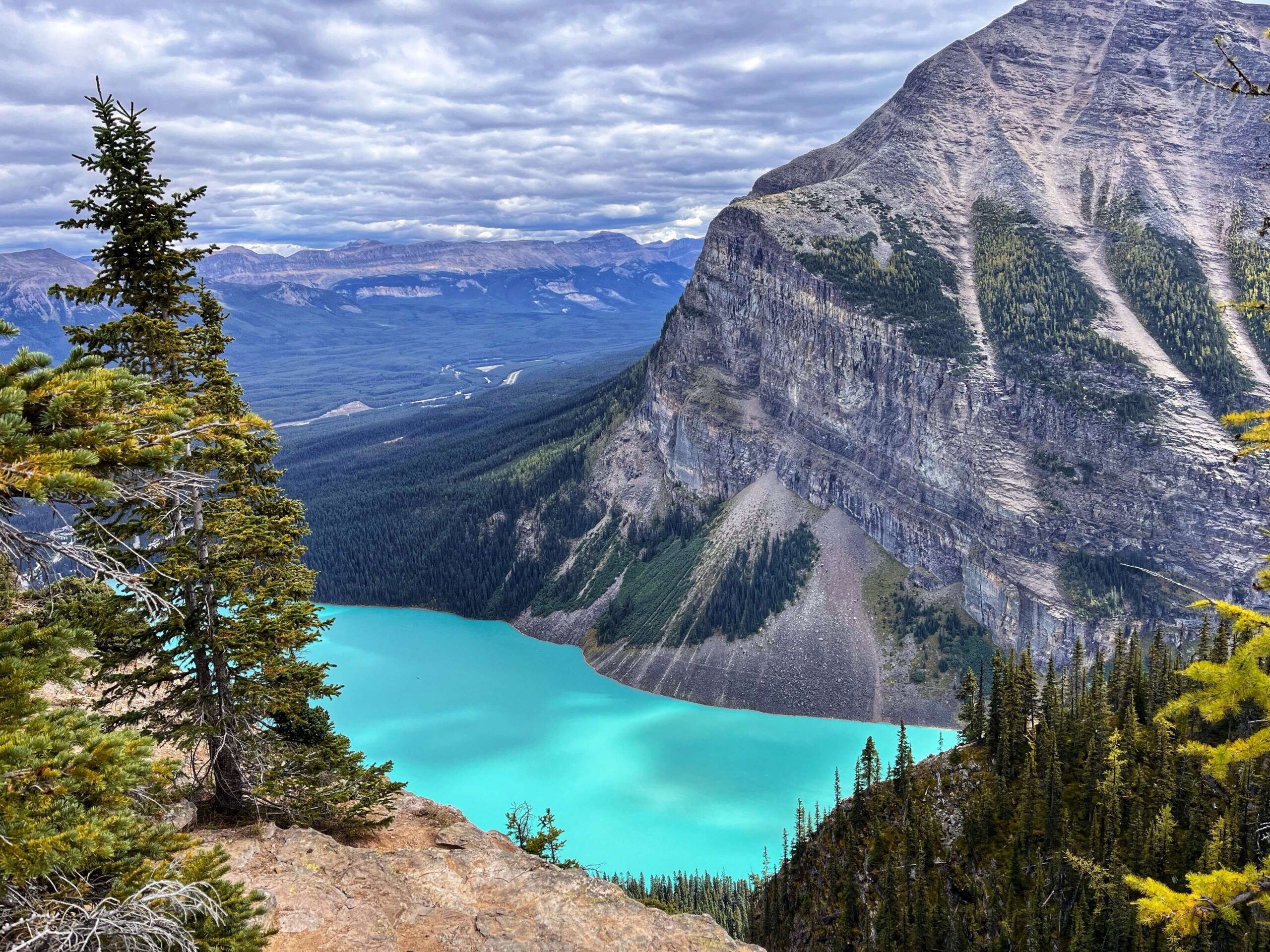A comprehensive guide to exploring Germany’s port city
I was so impressed with Hamburg. It’s a bustling metropolis with so much to do: vivacious nightlife, extraordinary architecture, distinct food scene, and a tangibly rich history. Yet, Hamburg also the city still has a small town, hometown vibe. There’s surprising amount of nature for being a huge commercial seaport (the 3rd largest in Europe and 2nd largest city in Germany). There’s a lot of green spaces and places to relax- this place was chill- I felt like Hamburg over-delivered in every aspect. I was so impressed with this this city and I can’t wait to go back. Are you planning a trip to Hamburg? You should-you’re in for a treat.
What to do in Hamburg, Germany?
Visit the Altstadt
Mönckebergstraße: Enjoy this bustling shopping street. It connects the main train station to the downtown. Walking along this route you will pass St Peter’s church as you approach the Rathaus (city hall).
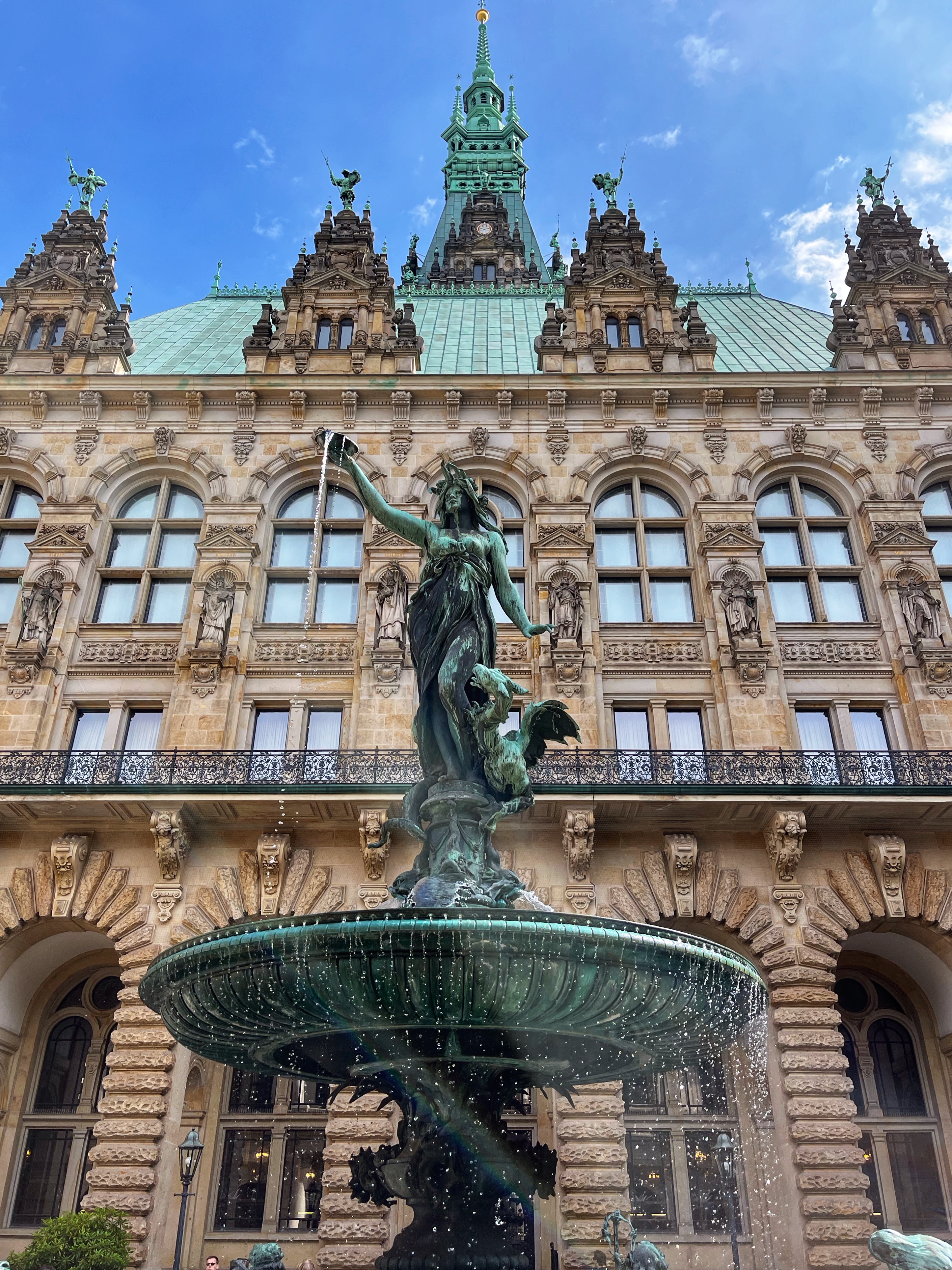
Check on the Rathaus, Hamburg’s city hall. The lobby is open to the public. Be sure to check out the famous Hygieia fountain in the courtyard (open during business hours).
St. Nikolai Memorial– The Nikolaikirche was largely destroyed by the WWII bombings. Its massive steeple was left intact and its charred remains looms hauntingly over the city. Now the rest of the structure is open to the elements. Fragments of arches, shattered windows, and traces of the nave create a somber and moving monument to the ravages of war.
Ascend the steeple for the astounding views Hamburg. From the top, the city unfolds before you: a network of winding canals, the Speicherstadt, and numerous green steeples pierce the Hamburg skyline. It’s pretty striking- most of the church is left in crumbles but the massive spire stands tall and resilient. Yet, from this perspective, you can still see the details of the fire scars on its charred surface.
Descend into the crypts: there’s a museum about the destruction of the church and city during WWII. It details the bombings that all but decimated the Hamburg in an allied attack called Project Gomorrah. It is solemn, haunting, but very informative. The St. Nikolai Memorial is a fascinating site and one of the most memorable things we did in Hamburg. Entrance to the museum, steeple and memorial cost only 6e.
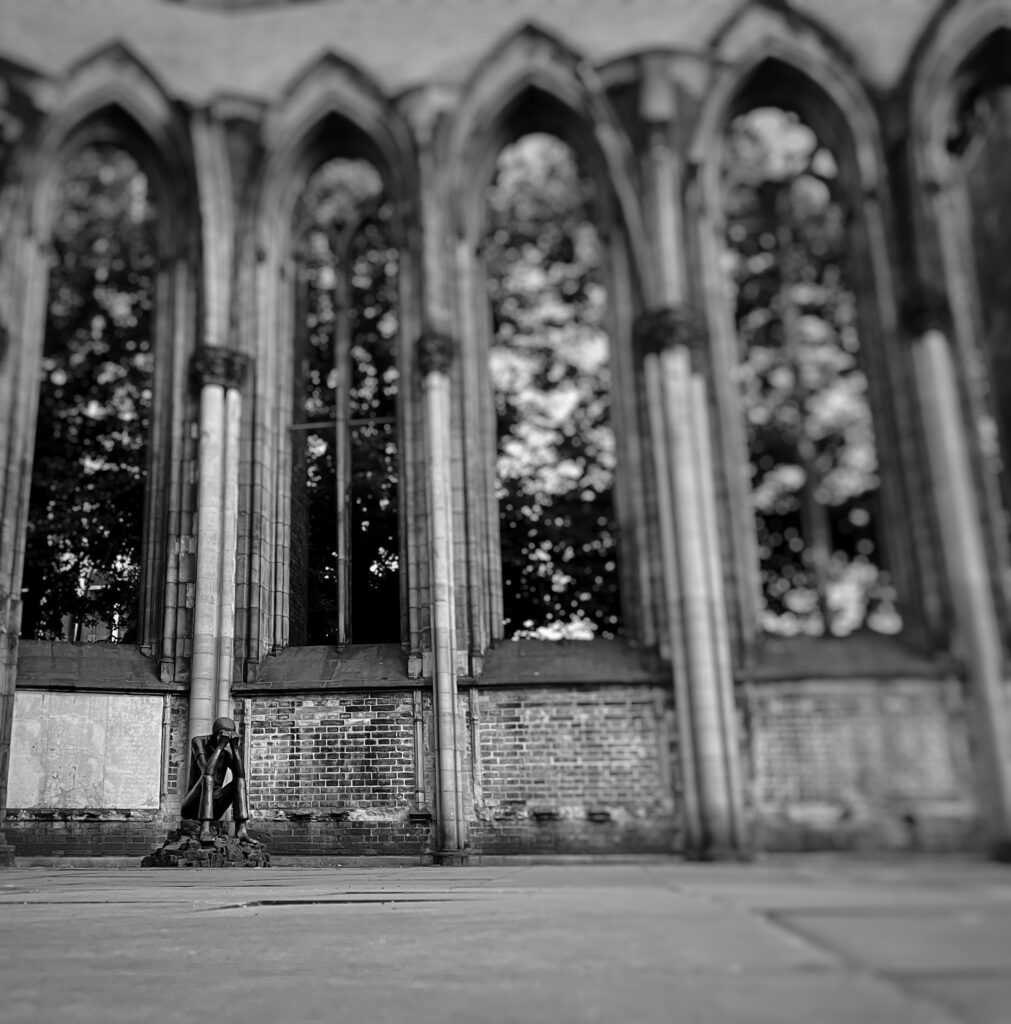
Be sure to explore Hamburg’s lakes—they’re a vital part of the city, offering both recreation and ambiance. The Binnenalster, or Inner Alster, enriches the Altstadt with its serene waters, creating peaceful retreats near the Rathaus and the surrounding arcades and galleries. The larger Außenalster, or Outer Alster, invites adventure with opportunities for water sports, sailing, and scenic boat tours. There are bike and jogging paths around both lakes, infusing daily commute and activity with serenity.
See the Chilihaus: This architectural gem was commissioned by a ship owner who made his fortune in the spice trade, hence the name Chilehaus. It’s thought that the design of the building is supposed to resemble the bow of a ship.
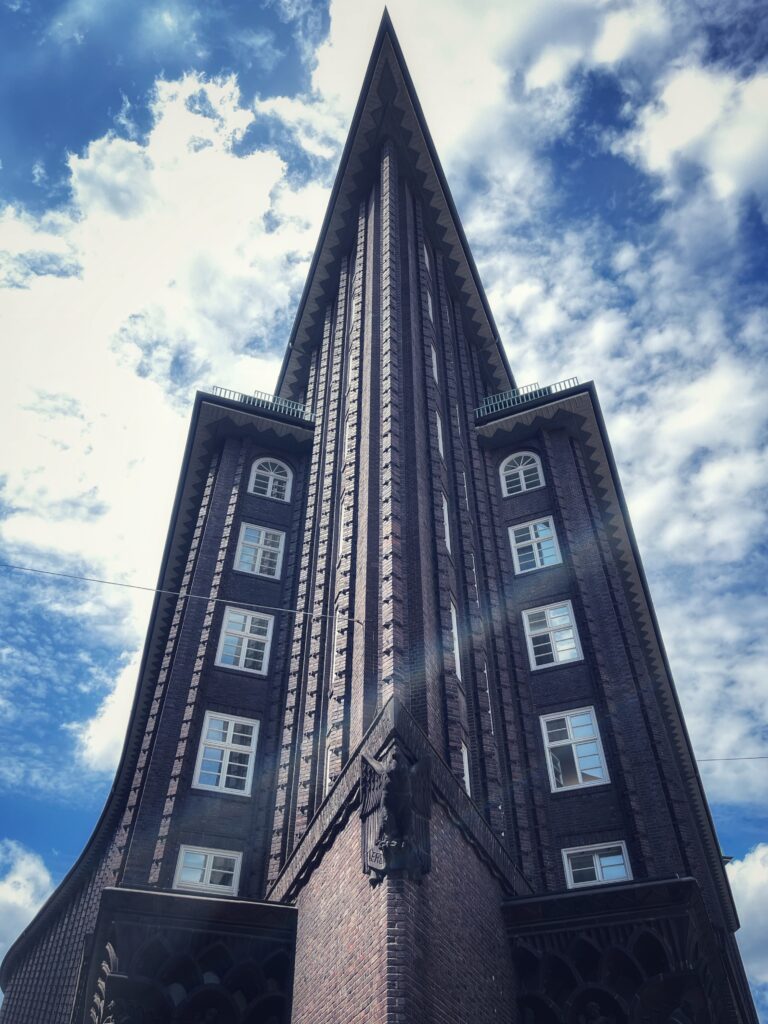
The Chilihaus is in the district Kontorhausviertel– a conglomerate of buildings built in the brick expressionism architectural style distinct to Hamburg. The area is also under protection of UNESCO World Heritage status shared with the adjacent Speicherstadt. The Chilihaus is a distinct and a notable Hamburg landmark. It now houses businesses, bars, restaurants, and cafes
The Old Elbe Tunnel was built to facilitate crossing the river. A bridge would have disrupted the ship traffic, so this tunnel that goes under the Elbe. There are large elevators at both ends to shuttle the vehicles to the tunnel- now the area is open only to bikes and pedestrians. I recommend taking the stairs a few flights to the tunnel entrance because the view of the spiraling staircase is cool from this perspective. The lines for the elevator can get long, but it goes quickly.
Check out the St. Pauli landing dock, or the Landungsbrüken. It’s a bustling tourist area of cafes, restaurants, and shops right on the floating docks. On a nice day it’s so relaxing, great views of the water and ferries. You can easily add this walk from the U-Bahn station to the Old Elbe Tunnel
Explore the Historic Speicherstadt
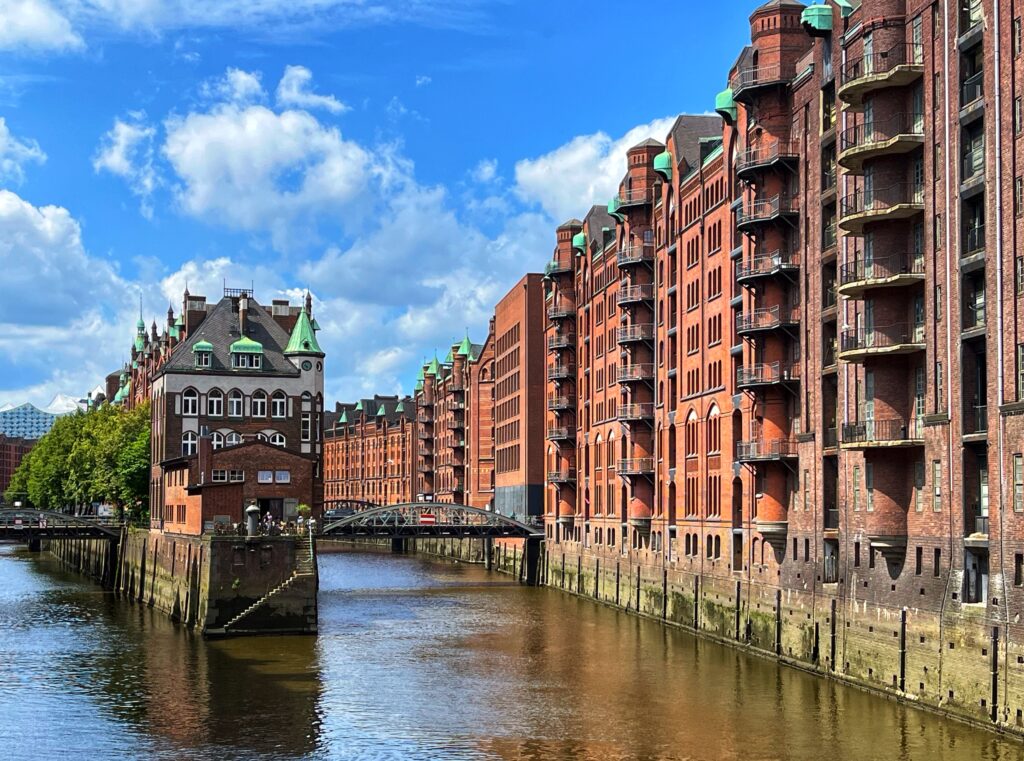
Speicherstadt is an UNESCO World Heritage Site and it’s so unique. This is the largest warehouse district the in the world where goods from the commercial port were once unloaded and stored. Now, the brick buildings line the canals and have been repurposed into businesses. You cannot miss this interesting neighborhood. You can easily spend a day here-many of the best things to do in Hamburg are in this area: the Miniatur Wunderland, Maritime Museum and the Elbphilharmonie.
The Elbphilharmonie is a concert hall completed in 2017. Its distinct modern architecture stands out against Hamburg’s brick dominated skyline. The design of the building is evocative of the maritime roots that are so central to city’s identity, resembling waves or sails. The reflective surface catches the light and blends in with the sky.
Enjoy sprawling views from the 6th floor viewing platform that wraps around the entire building. From here, you can see many major monuments. Check out the bar, restaurant, cafe and gift shop before you head back down. Access to the viewing platform is free but requires a ticket that can be obtained at the Elphie, the venue’s endearing nickname.
Relax at Planten un Blomen: A floral Oasis in the Heart of Hamburg.
Hamburg is a surprisingly green city, considering its size– thanks in part to this large central garden. There’s a lot to explore: A Japanese tea garden brings calm, an elaborate kids’ playground, and a vibrant rose garden. There’s also concert venue, cafes, a duck pond, and water features that glimmer in the sun. Cozy lawn chairs are scattered across the lawn—some under the shade of willow trees, others tucked away in quiet little corners. This park beckons you to sit down, unwind, and just soak in the beauty.
I visited in the summer, and wow—everything was in full bloom. Flowers everywhere, bursting with color and fragrance, made the whole place feel magical. Honestly, if I lived in Hamburg, I would hang out here all the time. Whether you’re up for a peaceful solo moment, a picnic with friends, or just a lazy afternoon of people-watching, Planten un Blomen is the perfect escape.
Experience Hamburg’s Wild Nightlife and Entertainment
The Reeperbahn is a mile-ish long stretch of bars, night clubs, music venues and other nightlife in St. Pauli. It’s known as the most sinful mile, once famous for it’s red light district. Now it’s a vivacious cultural hub and is defiantly one of Hamburg’s best known sites.
It is well known especially for it’s legendary music scene. Here, you can find the famous Mojo Club. This iconic building is announced by the imposing gates that arise out of the concrete: two turntables emblazoned with the M logo.
Another notable music venue is the Indra Club, where the Beatles played their early gigs before their worldwide fame. The city is very proud of the fact that the Beatles got their start in Hamburg, and have erected a memorial in the Reeperbahn. Take a pause to appreciate the statue of the band in Beatlesplatz. This can be found near Große Freiheit, a busy side street next to Beatlesplatz that leads to Indra Club and other nearby venues that hosted them. For those interested in the history of the Beatles in Hamburg, there are multiple Beatles themed tours.
Next to the Reeperbahn lies Herbertstraße, a street with restricted access to women and minors due to its legalized prostitution. While the brothels are confined to this street, their presence has infused the surrounding area with an air of hedonistic revelry, reflected in the abundance of strip clubs and risqué venues. Many of these establishments maintain a sense of discretion, with curtained windows shielding the curious or bashful.
Concerned about safety? My experience was surprisingly positive—I visited with friends, chatted with locals, and never felt uneasy—but one should always be cautious and aware. The atmosphere is more controlled than scandalous, comparable to the energy of the Las Vegas Strip, and there’s even a nearby police station adding to the sense of security.
Dive Into Hamburg’s Culinary Scene
The food scene in Hamburg is thriving and distinct from other regions in Germany. I will write a full review on the best foods to try in Hamburg. The TLDR is that you must try Franzbrötchen, a remarkable pastry district to Hamburg. It’s a fortunate hybrid of a croissant and a cinnamon roll but is often made with other ingredients. This is your top priority Hamburg treat. Another regional specialties are the Fischbrötchen, a pickled herring sandwich, best consumed at the legendary Sunday morning Fish Market. The fish market is a Hamburg institution and can’t miss event. The enigmatic (IMO) currywurst is also a staple of the Hamburg food scene.
Where to stay in Hamburg?
We stayed at the Hotel Europäischer Hof. It’s conveniently located across from the main train station, near notable restaurants and easy walk to the lakes, and many famous sites in the inner-city area.
It had an indoor pool, hot tub, spa and WATER SLIDE. Also, the continental breakfast was epic. The staff was so incredibly friendly- they offered us a free upgrade for no reason and were super helpful with recommendations for our week in Hamburg. Maybe Germans are just very friendly people? We had a great experience.

